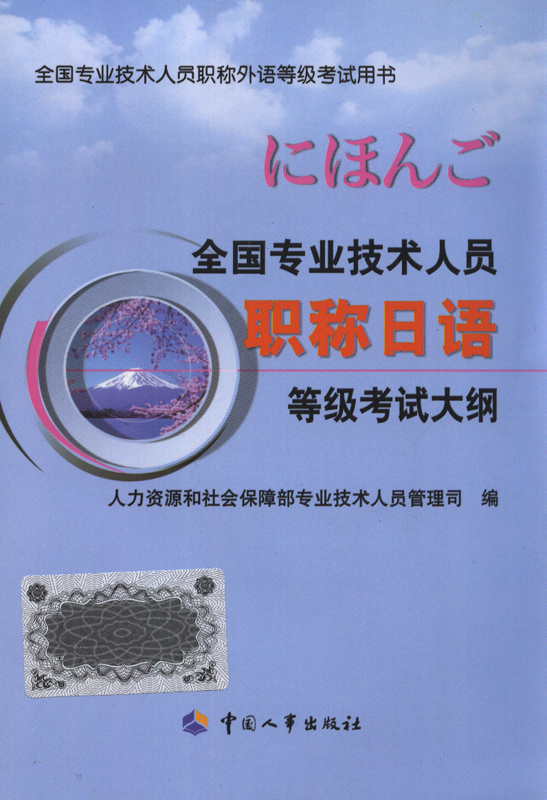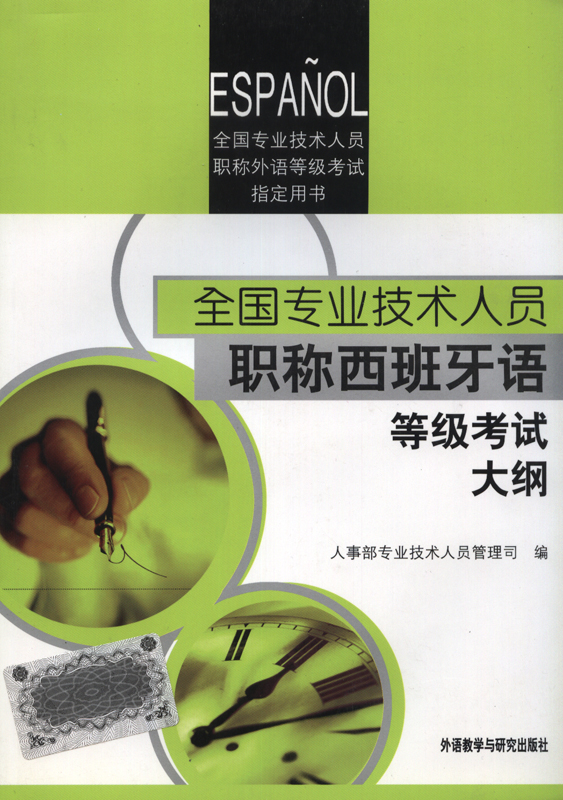第1部分:词汇选项(第1—15题,每题1分,共15分)
下面每个句子中均有1个词或短语划有底横线,请为每处划线部分确定1个意义最为接近的选项。
1. All the flats in the building had the same layout.
A. arrangement B. color C. size D. function
2. Our aim was to update the health service, and we succeeded.
A. offer B. provide C. fund D. modernize
3. He has been granted asylum in France.
A. Power B. Relief C. Protection D. Increase
4. Nothing would induce me to vote for him again.
A. Teach B. Help C. Discourage D. Attract
5. Every week the magazine presents the profile of a well-known sparts personality.
A. success B. evidence C. description D. plan
6. Her comments about men are utterly ridiculous.
A. slightly B. completely C. partly D. faintly
7. The walls are made of hollow concrete blocks.
A. big B. long C. empty D. new
8. We almost ran into a Rolls-Royce that pulled out in front of us without signalling.
A. overtook B. passed C. hit D. found
9. When I heard the noise in the next room, I couldn't resist having a peep.
A. chance B. look C. visit D. try
10. She moves from one exotic location to another.
A. familiar B. similar C. proper D. unusual
11. He was weary of the constant battle between them.
A. fond B. proud C. afraid D. tired
12. The photographs evoked strong memories of our holidays in France.
A. stored B. refreshed C. blocked D. Erased
13. Newborn babies can discriminate between a man's and a woman's voice.
A. distinguish B. treat C. express D. analyze
14. He shifted his position a little, in order to alleviate the pain in his leg.
A. ease B. control C. experience D. suffer
15. The weather was crisp and clear and you could see the mountain fifty miles away.
A. fresh B. heavy C. hot D. windy
参考答案:1、A 2、D 3、C 4、D 5、C 6、B 7、C 8、C 9、B 10、D 11、D 12、B 13、A 14、A 15、A
第二部分:阅读判断(第16~22题,每题1分,共7分)
下面的短文后列出了7个句子,请根据短文的内容对每个句子做出判断;如果该句提供的是正确信息,请选择A;如果该句提供的是错误信息,请选择B;如果该句的信息文中没有提及,请选择C。
In Sports, Red is the Winning Color
When opponents of a game are equally matched, the team dressed in red is more likely to win, according to a new study.
British anthropologists Russell Hill and Robert Barton of the University of Durham reached that conclusion by studying the outcomes of one-on-one boxing, tae kwon do, Greco-Roman-wresting, and freestyle-wrestling matches at the 2004 Summer Olympics in Athens, Greece.
In each event Olympic staff randomly assigned red or blue clothing or body protection to competitors. When otherwise equally matched with their opponent in fitness and skill, athletes wearing red were more likely to win the bout.
"Where there was a large point difference—presumably because one contestant was far superior to the other—color had no effect on the outcome," Barton said. "Where there was a small point difference, the effect of color was sufficient to tip the balance."
In equally matched bouts, the preponderance of red wins was great enough that it could not be attributed to chance, the anthropologists say. Hill and Barton found similar results in a review of the colors worn at the Euro 2004 international soccer tournament. Their report will be published in tomorrow's issue of the journal Nature.
Joanna Setchell, a primate researcher at the University of Cambridge in England, has found similar results in nature. Her work with the large African monkeys known as mandrills shows that red coloration gives males an advantage when it comes to mating.
The finding that red also has an advantage in human sporting events does not surprise her, addding that "the idea of the study is very clever."
Hill and Barton got the idea for their study out of a mutual interest in the evolution of sexual signals in primates—"red seems to be the color, across species, that signals male dominance and testosterone levels," Barton said.
For example, studies by Setchell, the Cambridge primate researcher, show that dominant male mandrills have increased red coloration in their faces and rumps. Another study by other scientists shows that red plastic rings experimentally placed on the legs of male zebra finches increase the birds' dominance.
Barton said he and Hill speculated some speculated that "there might be a similar effect in humans. And if so, it could be apparent in sporting contests."
The pair say their results indicate that sexual selection may have influenced the evolution of humans' response to color.
Setchell, the primatologist, agrees. "As Hill and Barton say, humans redden when we are angry and pale when we're scared. These are very important signals to other individuals," she said.
The advantage of red may be intuitively known, judging from the prevalence of red uniforms in sports—"though it is clearly not very widely appreciated, on a conscious level at least," Barton said.
He adds that the finding of red's advantage might have implications for regulations that govern sporting attire. In the Olympic matches he surveyed for the new study, for example, it is possible some medal winners may have reached the pedestal with an unintended advantage.
"That is the implication, though we cannot say that it made the difference in any one specific case," Barton said.
Meanwhile, Setchell noted—tongue-in-cheek—that a red advantage may not be limited to sports. "Going by the recent [U.S.] election results, red is indeed quite successful," she said.
16. Both Hill and Barton wanted to find out if color affects the outcome of sports matched.
17. Hill and Barton are both interested in primates.
18. Male mandrills use yellow coloration to attract a mate.
19. Red is not an advantage for zebra finches.
20. The red plastic rings were left on the finches permanently.
21. Hill and Barton believe athletes in red are more likely to win.
22. Many athletes oppose the new regulations on sports uniforms.
答案:16. Both Hill and Barton wanted to find out if color affects the outcomes of sports matches.
答案为A(right).
相关句:They (Hill and Barton) …reached the conclusion by studying the outcomes of boxing…
The outcomes 回应上文中提到的“the team dressed in red is more likely to win”
17. Hill and Barton are both interested in primates(灵长目).
答案为A(right).
相关句:Hill and Barton got the idea for the study from a mutual interest in primates.
18. Male mandrills use yellow coloration to attract a mate.
答案为B(wrong).
相关句:Red coloration gives males an advantage when it comes to mating.
19. Red is not an advantage for Zebra finches(斑胸草雀).
答案为B(wrong).
相关句:Scientists put red plastic rings on the legs of male Zebra females, which increased the bird’s success in finding a mate.
20. The red plastic rings were left on the finches permanently.
答案为C(not mentioned).
21. Hill and Barton believe athletes in red are more likely to win.
答案为A(right).
相关句:Across a range of sports, we find that wearing red is consistently associated with a higher probability of winning.
22. Many athletes oppose the new regulations on sport uniforms.
答案为C(not mentioned)
相关句:the discovery of red’s advantage might lead to new regulations on sports uniforms.
第三部分:概括大意和完成句子(第23~30题,每题1分,共8分)
下面的短文后有2项测试任务:(1)第23~26题要求从所给的6个选项中为指定段落每段选择1个小标题;(2)第27~30题要求从所给的6个选项中为每个句子确定一个最佳选项。
How technology pushes down price
The Treaty of Breda, signed in 1667 after a war between the English and Dutch in which the English were worsted, gave the Dutch the big prize: Run, a small island in the Indonesian archipelago which was the world's principal source of nutmeg. The margin on nutmeg at the time was around 3,200%. The English, as a consolation prize, got Manhattan. As an illustration of the long-term fall in food prices compared with other goods, that is a sharp one. But deflation has characterized the food business for centuries, because of continual advances in food production and distribution technology.
Consumers have benefited greatly from those advances. Malthusians, whose descendants until quite recently predicted that the world would run out of food, have thereby been confounded. More and more food is being produced by fewer and fewer people with less and less capital; it is therefore ever more plentiful and cheaper. Since demand is to some extent limited by the size of people's stomachs, spending on food compared with other goods has been falling for many years, and continues to drop (see chart 4).
Genetically modified (GM) seeds are the latest manifestation of a production revolution that started with Charles “Turnip” Townsend, who in the 18th century laid the basis for crop rotation. Organic fertilisers were replaced by chemical ones in the 19th century. The railway opened up the American mid-west. The horse replaced the cow, the combine harvester the horse. After the second world war, dwarf varieties of wheat and rice (which overcame the problem that heavily fertilised crops in hot countries grew too tall and fell over) boosted developing-country output. The “green revolution” helped trigger a more recent “livestock revolution”, documented by Chris Delgado, who works jointly for the International Food Policy Research Institute and the International Livestock Research Institute. Higher incomes and urbanisation, combined with falling food prices, have boosted meat and milk consumption in developing countries. By 1997, real beef prices were a third their level in 1971. Over that period, meat consumption in developing countries rose five-fold, three times as fast as in developed countries. Milk consumption rose three-fold.By the 1980s, advances in conventional plant breeding had tailed off, but GM made it possible to do things with DNA that conventional breeding could not do. Despite scaremongering in Europe, GM technology is spreading elsewhere: most of the world's soya is now GM.Producing lots of food is not much good unless you can distribute it, so advances in distribution technology have been as important as those in production technology. Salt, used to preserve food, which meant that it could be stored and traded, was an early aid to distribution. Canning arrived in the early 19th century, when a Frenchman discovered that food could be stored longer if it was heated before it was bottled, and a Briton worked out that tin cans were easier to transport than bottles; and both the British and the French armies used the technology to feed their troops in the Napoleonic wars.Francis Bacon, a British scientist and essayist, was an early victim of the struggle to develop refrigeration technology: he died in 1626 after eating some chicken that he had stuffed with snow as part of an experiment. In 1877 the first shipload of frozen beef was carried from Argentina to France. The impact on the food industry of the spread of the domestic refrigerator in the 20th century was rivalled only by that of the car, which changed the face of retailing by allowing supermarkets to develop. Supermarkets have helped push down prices principally because of their scale. Big businesses can invest in IT systems that make them efficient. And their size allows them to buy in bulk. The more concentrated the retail business becomes, the bigger supermarkets get, the further prices get pushed down until, of course, there is so much concentration that there is not enough competition. Britain's Competition Commission indicated earlier this year that the supermarket industry was moving towards that point: it refused to let any of the top three supermarket chains buy one of the smaller players. In America, however, where the size of the country means a more fragmented retail business, there is still scope for further concentration: the “black death”, as Wal-Mart is known in the trade, is expected to claim more victims. Wal-Mart's scale, the efficiency of its IT systems and the cheapness of its non-unionised labour force ($8-10 an hour compared with $17-18 for mid-sized players such as Albertsons, A hold, Safeway and Kroger), give it a massive advantage. It sells Colgate toothpaste for an average of 63% of its competitors' price, Tropicana orange juice for 58% and Kellogg's Corn Flakes for 56%. Analysts expect at least one of the mid-sized firms to disappear.The concentration of power among retailers has led to another stage in the shift in power down the food chain. Once upon a time, power lay with landlords. In the 20th century, as processing and distribution became more important, so did the food producers. Lord Haskins, Tony Blair's adviser on farming, recalls going to food industry conferences in the 1970s, when there would be a line of Rolls-Royces outside, all belonging to producers.
Retailer concentration has shifted power (and profits) further down the food chainNo longer. Retailer concentration has shifted power (and profits) further down the food chain. But the retailers are not the type to swank around in flash cars. They are ostentatiously parsimonious, advertising their determination to keep prices down. Wal-Mart's headquarters in Bentonville, Arkansas, is in a converted warehouse. Tesco, Britain's biggest private-sector employer, has its headquarters in a Stalinist bunker in a nasty bit of north-east London. Beside the main reception its share price is proudly displayed on one of those blackboards with white plastic letters stuck on to it that you see in the cheapest sandwich bars. One of the manifestations of retailers' power (which also reinforces it) is the growth of private-label (ie, supermarket- not producer-branded) goods. In 2002, according to the Boston Consulting Group, own-label made up 39% of grocery sales in Britain, 21% in France and only 16% in the United States, but everybody thinks that, as retailing becomes more concentrated, America is going the way of Britain. Retailers can sell private-label only if the price cuts they offer mean more to consumers than a producer's brand. As own-label has expanded, so supermarkets have been taking all but the most successful brands off their shelves. “If you are a must-have brand it's fine,” says Dido Harding, Tesco's commercial director. “If you're a sub-global brand, life's much harder.”The shift in power to retailers has put pressure on producers' margins, hence huge programmes of cuts. Since 2000, Uni-lever has cut its workforce by 33,000 to 245,000 and dropped lots of minor brands as part of its “path to growth” strategy. Cadbury is the latest to announce big cuts: in October it said that it will be shutting 20% of its 133 factories and cutting 10% of its 55,000 global workforce. These cuts should help keep costs, and thus the price of food, low.Does cheap food make people unhealthy? In some ways. Hydrogenated vegetable oil, for instance—vegetable fat made solid by adding hydrogen atoms—is the nutritionists' current bête noire. Widely used as a cheap substitute for butter and cream, it is the main dietary source of trans fats. Trans fats are heavily implicated in heart disease; companies are taking them out of products for fear of lawsuits.Cheap food may also make people eat more. In a paper entitled “Why have Americans become more obese?” David Cutler, Jesse Shapiro and Edward Glaeser, a group of Harvard economists, note that, among OECD countries, obesity is correlated to the level of regulation: the more food laws, the more protected local producers are, the harder it is to import technology, the slimmer people tend to be. They reckon that is because of price: the less regulated a country, the cheaper a Big Mac tends to be. But it could be another factor: heavily regulated countries might, for instance, be places with stronger family ties where real meals have survived and people eat fewer snacks and less fast food.
Giving people bigger portions is an easy way of making them feel they have got a better dealFood companies certainly think giving people more food for their money makes them buy more. That is why portions have been getting larger and larger. In America, soft drinks, which used to come in 8oz and then 12oz containers now come in 20oz ones. As Dennis Lombardi of Technomic, a food-industry consultancy in Chicago, points out, giving people bigger portions is an easy way of making them feel they have got a better deal. “If I can give you an 8oz portion for $7, I can give you a 12oz portion for $8. The only incremental cost to me is the food, which probably cost 25 cents.” Everybody, therefore, has done it.Scientists have shown that portion size partly determines how much people eat. Barbara Rolls, a nutrition professor at Pennsylvania State University, fed subjects macaroni cheese, some in 2.5-cup portions, some in 5-cup portions. The ones with the big portions ate 27% more, on average, than those with small portions but did not report feeling any fuller. Brian Wansink at the University of Illinois found that if you give movie-goers an extra-large bucket of popcorn, they eat nearly half as much again as if you give them the next size down, even if the popcorn is stale.Now companies are under pressure to stop selling people more for less. But it is a hard trend to reverse, as Mr Lombardi points out. “How about I give you a third less food for $1 less? I don't think so.”
Paragraph 1
Paragraph 2
Paragraph 3
Paragraph 4
A. Huge retailers force producers to cunt costs
B. Consumers like supermarkets
C. Technology helps reduce food prices
D. Food comes cheaper in larger portions
E. Chain stores provide better service
F. Bigger supermarkets offer lower prices
27. Big supermarkets can offer food at lower prices because they can buy in___
28. Some food producers have reduced___
29. Besides cutting its workforce, unilever also abandoned its___
30. Buyers like bigger portion because they think they have got___
A. their workforce
B. huge portions
C. large quantities
D. their money
E. a good barging
F. minor brands
答案:23.C technology helps reduce food prices24. F bigger supermarkets offer lower prices25. A. Huge retailers force producers to cut costs26.D. food comes cheaper in larger portions27. Big supermarkets can offer food at lower prices because they can buy ___.答案为C: in bulk = in large quantities28. Some forced producers have reduced ___答案为F。minor brands29.Besides cutting its cost, Unilever also abandoned its ____答案为A. their workforce 30.Buyers like big portions because they think they have got ___.答案为E。a good bargain = a better deal
















